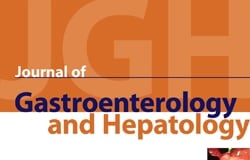
“Background and aims: Hepatitis C virus (HCV) infection is associated with the onset of metabolic disorders which constitute risk factors for liver disease progression. Their impact may persist after the HCV infection has been cured. Cannabis use is associated with a lower risk of obesity and diabetes in both general and HCV populations. The associations between cannabis use and both dyslipidemia and hypertension have not yet been studied in persons with chronic HCV infection.
Methods: Using cross-sectional data from the French ANRS CO22 Hepather cohort, we used regression models to test for an inverse relationship between cannabis use and (i) dyslipidemia, (ii) hypertension, and (iii) the total number of metabolic disorders.
Results: Among the 6364 participants in the study population, both former and current cannabis use were associated with a lower risk of hypertension and fewer metabolic disorders. These results were independent of central obesity. Cannabis use was not associated with dyslipidemia.
Conclusions: In people chronically infected with HCV, cannabis use was associated with a lower risk of hypertension and a lower number of metabolic disorders. Post-HCV cure studies are needed to confirm these findings using longitudinal data and to test whether they translate into reduced mortality in this population.”
https://pubmed.ncbi.nlm.nih.gov/36294456/
“In a large cohort of people with chronic HCV infection living in France, current or former cannabis use was associated with a lower risk of hypertension and a lower number of metabolic disorders.”



 “Chronic hepatitis B virus (HBV) infection may evolve into cirrhosis and hepatocellular carcinoma, and this progression may be accelerated by specific risk factors, including overweight and obesity. Although evidence for a protective effect of cannabis use on elevated body weight has been found for other populations, no data are available for HBV-infected patients.
“Chronic hepatitis B virus (HBV) infection may evolve into cirrhosis and hepatocellular carcinoma, and this progression may be accelerated by specific risk factors, including overweight and obesity. Although evidence for a protective effect of cannabis use on elevated body weight has been found for other populations, no data are available for HBV-infected patients.  “The Endocannabinoid System (ECS) is primarily responsible for maintaining homeostasis, a balance in internal environment (temperature, mood, and immune system) and energy input and output in living, biological systems.
“The Endocannabinoid System (ECS) is primarily responsible for maintaining homeostasis, a balance in internal environment (temperature, mood, and immune system) and energy input and output in living, biological systems.  “Chronic hepatitis C virus (HCV) infection is a risk factor of insulin resistance, and HCV-infected patients are at a high risk of developing diabetes.
“Chronic hepatitis C virus (HCV) infection is a risk factor of insulin resistance, and HCV-infected patients are at a high risk of developing diabetes. “Utilization and safety of
“Utilization and safety of  “Mortality among individuals co-infected with HIV and hepatitis C virus (HCV) is relatively high. We evaluated the association between psychoactive substance use and both HCV and non-HCV mortality in HIV/HCV co-infected patients in France, using Fine and Gray’s competing-risk model adjusted for socio-demographic, clinical predictors and confounding factors, while accounting for competing causes of death. Over a 5-year median follow-up period, 77 deaths occurred among 1028 patients.
“Mortality among individuals co-infected with HIV and hepatitis C virus (HCV) is relatively high. We evaluated the association between psychoactive substance use and both HCV and non-HCV mortality in HIV/HCV co-infected patients in France, using Fine and Gray’s competing-risk model adjusted for socio-demographic, clinical predictors and confounding factors, while accounting for competing causes of death. Over a 5-year median follow-up period, 77 deaths occurred among 1028 patients.
